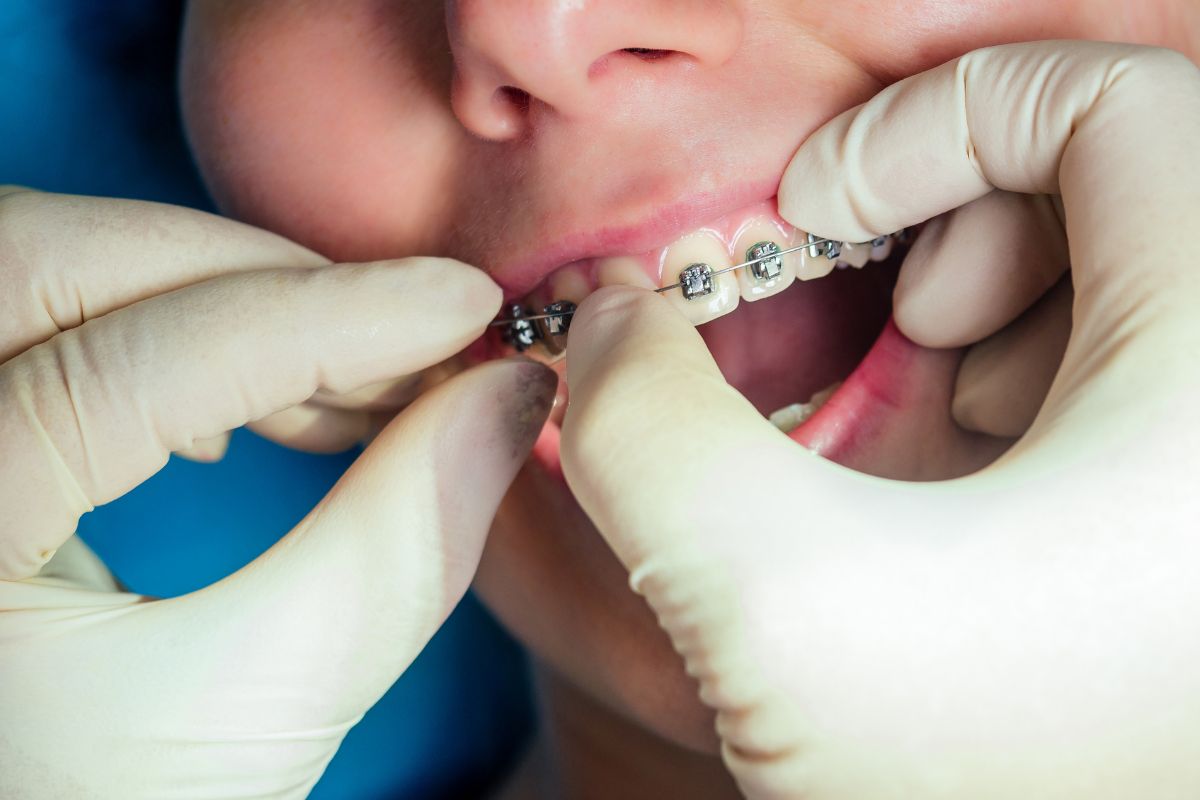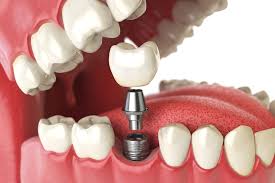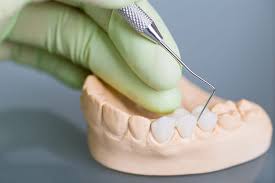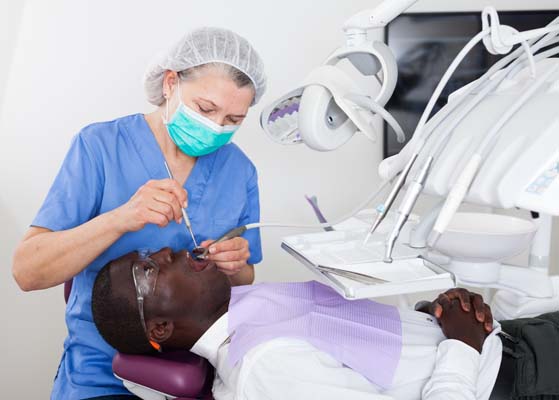Health
Teaching Kids Good Oral Hygiene With Family Dental Support

Teaching kids good oral hygiene starts with family support. You play an essential role in setting healthy habits for life. Brushing and flossing become simple routines when children see you doing it too. Encourage your kids by making these activities fun. Use songs or timers to engage them. Visit a west San Jose dentist regularly to ensure a healthy smile. These visits help detect issues early and teach your child about dental care. A dentist’s calming presence can ease any fears your child might have. Explain the importance of keeping teeth and gums clean. Discuss how a bright smile boosts confidence. Lead by example and show them the right way to brush. The earlier you start, the better the results. Make oral hygiene a family affair and invest in your child’s health. Partner with your dentist to create a strong foundation for your child’s dental future.
Why Oral Hygiene Matters
Oral hygiene is crucial for overall health. Poor dental care can lead to cavities, gum disease, and pain. Emotional well-being is affected too. Kids with dental problems may experience bullying due to bad breath or visible tooth decay. Regular cleaning helps prevent these issues, fostering both physical and emotional health. According to the Centers for Disease Control and Prevention, tooth decay is one of the most common chronic diseases in children. Early intervention can make a difference.
Engaging Ways to Teach Oral Hygiene
Fun activities make learning easy and effective. Here are three engaging ways to teach kids about oral hygiene:
- Interactive Games: Use apps that guide kids through brushing techniques.
- Storytelling: Create stories where characters battle tooth decay villains.
- Arts and Crafts: Help kids make a model of a tooth and discuss its anatomy.
Choosing the Right Dental Tools
The right tools matter. Choose age-appropriate toothbrushes with soft bristles. Kids’ toothpaste should have fluoride and a flavor they like. Floss picks can be easier for small hands to handle. Here’s a simple comparison table to help you pick the right products:
| Age Group | Toothbrush | Toothpaste | Flossing Tool |
|---|---|---|---|
| 0-3 Years | Soft, small head | Fluoride-free | None |
| 4-6 Years | Soft, colorful handle | Fluoride, fruity flavor | Floss picks |
| 7-12 Years | Soft, larger head | Fluoride, mint flavor | Floss picks or tape |
Creating a Routine
Consistency is key. Encourage brushing twice a day, morning and night. Make it a family event. Brush together to support and motivate each other. Use reminders like charts or stickers to track progress. Celebrate their achievements with small rewards or special outings. Praise their efforts to keep them motivated.
Addressing Common Challenges
Children may resist brushing or fear dental visits. Some tips to overcome these challenges include:
- Fear of the Dentist: Familiarize them with the dentist’s role. Arrange a friendly visit beforehand. Use books and videos to explain what happens during a dental check-up.
- Resistance to Brushing: Offer choices, like letting them pick their toothbrush. Make it a game where they beat a two-minute timer.
Monitoring Progress
Stay aware of your child’s oral health. Check for any changes, like discoloration or discomfort. Continue regular visits to your dentist. The American Dental Association offers guidelines on the frequency of dental checkups. Remember, early detection is key to preventing more serious issues.
Final Thoughts
Teaching kids good oral hygiene is a journey. Start early and involve the entire family. Create a positive environment that encourages learning and curiosity. With your guidance and support, along with professional dental care, your child can achieve and maintain a healthy, confident smile. The benefits are lifelong, ensuring your child’s well-being and happiness.
Health
4 Services That Make Family Dentistry The Most Convenient Option

Finding the right dental care for your family can feel challenging. You want a choice that fits your busy life. Family dentistry provides a solution. It combines care for all ages under one roof. This makes it easier to schedule visits and manage treatments. A San Antonio dentist can offer you this convenience, ensuring that your family’s dental needs are met efficiently. Imagine less time juggling appointments across multiple offices. Instead, picture a single destination where everyone receives tailored care. Family dentistry simplifies your routine, reduces stress, and keeps your family’s smiles healthy. With services that cater to different stages of life, you can trust that every family member receives the attention they deserve. The convenience of keeping everything in one place offers peace of mind. You focus less on logistics and more on enjoying time with loved ones.
1. Comprehensive Dental Exams
Regular dental exams are essential for maintaining oral health. Family dentists provide comprehensive exams for all ages. These exams include checking teeth, gums, and overall oral health. They help in catching potential issues early. Regular exams can prevent more serious problems later on. You save time and money by having all family members seen in one visit. This approach simplifies your schedule.
2. Pediatric Dentistry
Caring for children’s teeth requires a gentle touch and specialized knowledge. Family dentistry practices include specialists trained in pediatric care. They create a comfortable environment for children. This helps reduce anxiety and makes visits enjoyable. These specialists use techniques tailored to young patients, ensuring a positive experience. Engaging children early in dental care fosters lifelong healthy habits. For more information on pediatric dentistry, visit this resource from the American Dental Association.
3. Orthodontic Services
Orthodontic needs vary from person to person. Family dentists often offer orthodontic services like braces or aligners. This means no need for separate orthodontist appointments. You receive evaluations and treatments in a familiar setting. Managing orthodontic care within family dentistry simplifies treatment plans. It provides continuity in care and streamlines communication. It avoids the confusion of dealing with multiple providers and locations.
4. Preventive Care and Education
Preventive care is key to avoiding dental issues. Family dentists focus on educating patients about oral hygiene. They offer cleanings, fluoride treatments, and sealants. These services protect teeth and reduce the risk of cavities. Educating families on proper brushing and flossing techniques is crucial. Family dentists provide resources and support to encourage good habits.
Comparison of Family Dentistry Vs. Traditional Dentistry
| Service | Family Dentistry | Traditional Dentistry |
|---|---|---|
| Scheduling | One location, multiple ages, coordinated appointments | Separate locations, different appointments for family members |
| Specialized Care | Includes pediatric and orthodontic care | May require referrals to specialists |
| Continuity | Consistent care from childhood to adulthood | Different providers as needs change |
| Cost Efficiency | Bundled services can reduce overall costs | Separate fees for each provider |
Choosing family dentistry can streamline your life. By keeping all dental care under one roof, you benefit from coordinated scheduling and comprehensive services. This approach fosters strong relationships between your family and the dental team. It ensures consistent care throughout life stages. Finally, family dentists focus on preventive care and education. These services are crucial in maintaining oral health and preventing issues.
For those in San Antonio, considering a family dentist can make dental care simpler and more efficient. You gain peace of mind knowing that your family’s dental needs are addressed comprehensively. Remember, the convenience and effectiveness of family dentistry contribute to healthier smiles and stress-free visits.
Health
How General Dentistry Encourages Long Term Oral Health Habits

You want a healthy smile that lasts a lifetime. General dentistry plays a key role in promoting long-term oral health habits. Regular check-ups help detect issues early. This can prevent more serious problems down the road. This care isn’t just about fixing problems. It’s about building a foundation for healthy habits. You learn how daily brushing, flossing, and mouthwash use can keep your teeth strong. Also, dentists for seniors in North Scottsdale understand the unique needs of older adults. They offer advice and treatment that considers age-related changes. These tailored approaches ensure that you receive care suited to your needs. Embracing these habits now can lead to fewer complications later. Prioritizing oral health today means protecting your smile tomorrow. Stay committed to these practices and enjoy the long-term benefits. It’s never too late to adopt good habits and maintain healthy teeth. Your future self will thank you.
Routine Visits Build Good Habits
Routine visits to the dentist reinforce the importance of daily care. Each appointment is a chance to learn more about keeping teeth and gums healthy. Your dentist can show you the right brushing and flossing techniques. They also give advice on the best products to use. This hands-on advice is invaluable.
Early Detection Saves Teeth
Seeing your dentist regularly lets them catch problems while they are small. A small cavity now is easier and cheaper to fix than a root canal later. Early detection saves time, money, and stress.
Preventive Care is Key
The goal of general dentistry is to prevent problems before they start. Cleanings remove plaque and tartar that brushing misses. This keeps your gums healthy. Fluoride treatments strengthen enamel, making teeth more resistant to decay.
Comparing Dental Habits
Maintaining good habits makes a big difference in oral health. See the comparison below of individuals who follow regular dental care and those who do not:
| Habit | Regular Care | No Regular Care |
|---|---|---|
| Check-Up Frequency | Every 6 months | Once every few years |
| Cavity Incidence | Low | High |
| Gum Disease | Rare | Common |
| Overall Oral Health | Excellent | Poor |
The Role of Education
General dentistry isn’t just about treatments. Education is a core part of each visit. The Centers for Disease Control and Prevention highlights the importance of learning proper brushing and flossing. This step is crucial for a lifetime of good oral health. Understanding what causes cavities and gum disease can motivate you to adopt better habits.
Nutrition and Oral Health
Your dentist may discuss the link between diet and oral health. Foods high in sugar can increase the risk of cavities. By choosing a balanced diet, you protect your teeth and gums. Drinking plenty of water is another simple way to keep your mouth clean and healthy.
Special Considerations for Seniors
Aging can bring unique dental challenges. Seniors may face issues like dry mouth and gum recession. Dentists for seniors offer tailored solutions. These professionals ensure oral care adapts to these changes.
A Commitment to Long-Term Health
Oral health is a journey, not a one-time fix. Regular dental visits create a partnership for long-term health. This collaboration fosters habits that benefit you for life.
Conclusion
General dentistry encourages habits that keep your smile healthy. By staying informed and engaged, you can enjoy a lifetime of good oral health. Regular check-ups, good daily care, and education make this possible. It’s a team effort between you and your dentist that has a lasting impact.
Health
5 Benefits Of Working With A Dedicated Denture And Implant Dentist

Choosing the right dental professional impacts your health and confidence. You deserve a Fresno implant dentist who focuses on dentures and implants. This specific expertise means a skilled approach to restorative dental care. You receive tailored solutions that address your individual needs. Personalized care leads to better outcomes.
A dedicated dentist knows the latest techniques. You benefit from proven methods that enhance your smile and oral health. Investments in specialized training ensure you get the highest standard of care. Your comfort and long-term results matter.
Working with a focused practitioner means you build a trusting relationship. You can communicate openly, ensuring your concerns are heard. This connection results in more successful treatments.
Feel reassured knowing you’re in capable hands. A committed dentist provides support and guidance at every step. You can enjoy renewed confidence and well-being. Embrace the advantages and discover the difference today.
1. Specialized Knowledge and Skills
When you choose a dentist specializing in dentures and implants, you tap into a wealth of knowledge. These professionals stay updated with the latest advancements. This commitment means you benefit from techniques that deliver better results. According to the National Institute of Dental and Craniofacial Research, specialized training enhances patient safety and treatment effectiveness.
2. Customized Treatment Plans
Every smile is unique. You need a treatment plan tailored to your dental history and future goals. A dedicated implant dentist considers all aspects of your oral health. This personalized approach reduces complications and improves satisfaction. Your input shapes the plan, ensuring it aligns with your expectations.
3. Enhanced Comfort and Care
Visiting a dentist focused on dentures and implants means you get care designed with your comfort in mind. These dentists use methods that minimize pain and discomfort. Your experience becomes more pleasant and stress-free. This attentive care supports both immediate and long-term well-being.
4. Long-Lasting Results
Quality implants and dentures enhance function and appearance. A specialist dentist uses materials and techniques that ensure durability. You enjoy results that last, sparing you frequent replacements or repairs. This longevity offers peace of mind and value.
| Benefit | General Dentist | Implant Specialist |
|---|---|---|
| Expertise | Broad dental knowledge | Focused implant and denture skills |
| Comfort | Basic comfort measures | Tailored comfort solutions |
| Longevity | Standard materials | Premium, durable materials |
5. Support and Follow-Up
The right dentist provides ongoing support. Aftercare is crucial for maintaining your new smile. Regular follow-ups ensure any issues are caught early. This proactive approach helps protect your investment and enhances satisfaction. The Centers for Disease Control and Prevention notes that routine dental visits are vital for oral health.
In summary, working with a dedicated denture and implant dentist offers numerous advantages. You gain a partner in your dental health journey. Together, you can achieve the smile you desire with confidence and comfort. Choose wisely and enjoy the long-term benefits.
-

 News1 week ago
News1 week agoThe Role Of Tax Accountants In Minimizing Penalties And Interest
-

 Health1 week ago
Health1 week agoHow General Dentistry Combines Comfort With High Quality Care
-

 Health1 week ago
Health1 week ago3 Signs You’re Ready For A Cosmetic Dentistry Consultation
-

 Health1 week ago
Health1 week agoHow General Dentistry Bridges Preventive And Cosmetic Dentistry Together
-

 Health7 days ago
Health7 days agoHow Accountants And Consultants Work Together To Support Growth
-

 Health7 days ago
Health7 days agoThe Role Of General Veterinarians In Supporting Rehabilitation
-

 Health1 week ago
Health1 week agoWhy Choosing A Family Dentist With Cosmetic Expertise Matters
-

 Health7 days ago
Health7 days agoHow Animal Hospitals Handle Reproductive And Breeding Care





